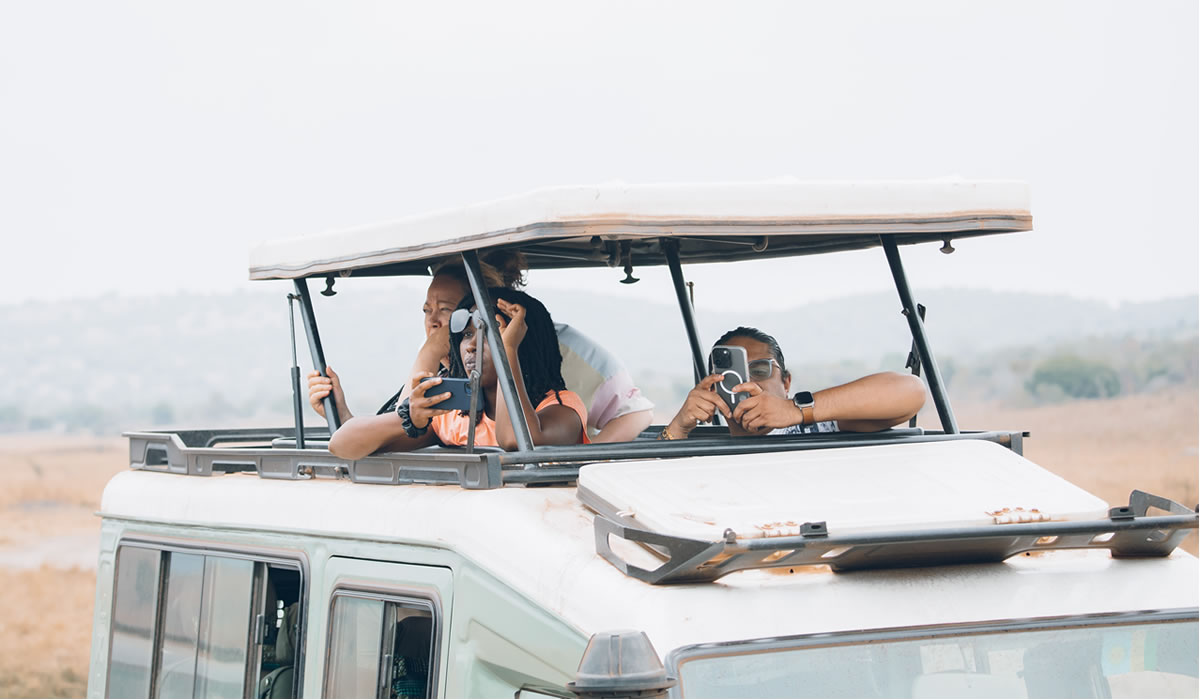Tucked away in the eastern reaches of Rwanda, Akagera National Park offers one of the most exhilarating wildlife experiences in East Africa. While Rwanda is globally celebrated for its mountain gorillas in Volcanoes National Park and chimpanzees in Nyungwe Forest, Akagera is the country’s only savannah park and the only place where visitors can enjoy a classic African game drive. With its rolling plains, shimmering lakes, and rich biodiversity, Akagera National Park is a must-visit destination for anyone seeking a Big Five safari in Rwanda.

Akagera National Park spans over 1,200 square kilometers and shares a border with Tanzania. Its diverse landscape includes open savannah, acacia woodlands, swamps, and lakes, creating a mosaic of habitats that support a wide array of wildlife. The park is named after the Akagera River, which flows along its eastern boundary and feeds a series of lakes, including Lake Ihema, the largest in the park. This unique blend of ecosystems makes Akagera one of the most scenic and ecologically rich parks in the region.
Game drives in Akagera are the park’s signature activity, offering visitors the chance to explore its vast terrain and encounter its thriving wildlife populations. Whether you opt for a morning, afternoon, or night drive, each safari promises a different perspective and a new set of animal sightings. The park is home to over 8,000 large mammals, including elephants, buffaloes, giraffes, zebras, antelopes, and predators like lions, leopards, and hyenas. Akagera is also one of the few parks in Africa where you can spot the Big Five; lion, leopard, elephant, buffalo, and rhinoceros thanks to successful reintroduction programs.
The reintroduction of lions in 2015 and black rhinos in 2017 marked a turning point for Akagera. Lions had been extinct in the park for nearly two decades due to human-wildlife conflict, but a group of seven lions was translocated from South Africa, and their population has since grown. Similarly, the return of the Eastern black rhino restored the park’s status as a Big Five destination. These conservation milestones were made possible through a partnership between the Rwanda Development Board and African Parks, a non-profit organization that manages protected areas across the continent.
Game drives in Akagera are organized by the Akagera Management Company (AMC), which oversees tourism and conservation activities in the park. Visitors can choose between guided safaris with experienced rangers or self-drive options for a more independent adventure. Guided drives are highly recommended for first-time visitors, as the rangers are skilled at tracking animals and sharing insights about the park’s ecology and history. Self-drive safaris are also popular, especially among locals and East African residents, and guides can be hired to accompany you for a small fee.
The park is divided into northern and southern sectors, each offering distinct wildlife experiences. The southern sector is where most accommodations are located and serves as the main entry point. It features lush wetlands, lakes, and woodlands, making it ideal for spotting hippos, crocodiles, waterbucks, and a variety of bird species. The northern sector, on the other hand, is characterized by open savannah and higher concentrations of large mammals. A full-day drive from south to north is considered one of the best ways to explore the park, offering panoramic views and diverse sightings along the way.
Morning game drives typically start around 6:30 AM and run until 11:30 AM, offering the best chance to see animals when they are most active. Predators like lions and hyenas are often spotted during these early hours as they finish their nocturnal hunts. Afternoon drives, from 12 PM to 5 PM, provide excellent opportunities to observe grazing herbivores and enjoy the golden light of the savannah. Night drives, which begin at 5:30 PM and end around 8:30 PM, are a thrilling way to discover Akagera’s nocturnal creatures, including bush babies, genets, and elusive leopards. Night drives are only available in the southern sector and must be booked in advance.
Akagera is also a paradise for birdwatchers, with over 500 recorded bird species. The park’s wetlands and lakes attract a variety of waterfowl, including herons, egrets, and African fish eagles. One of the most sought-after sightings is the rare shoebill stork, a prehistoric-looking bird that inhabits the swampy areas of the park. Other notable species include the papyrus gonolek, lilac-breasted roller, and the majestic grey crowned crane. Birding safaris can be arranged separately or incorporated into regular game drives.
The park’s infrastructure has improved significantly in recent years, making game drives more comfortable and accessible. Roads have been upgraded, signage is clear, and viewing platforms have been installed at key locations. Visitors can rent safari vehicles or use their own, and entrance fees vary depending on residency status and vehicle type. Rwandan and East African Community (EAC) residents enjoy discounted rates, while foreign visitors pay a higher fee. Hiring a guide costs around $25 for a half-day and $40 for a full-day, and night drives are priced at approximately $40 per person.
Accommodation options in and around Akagera cater to a range of budgets and preferences. Luxury lodges like Magashi Camp offer exclusive safari experiences with gourmet dining and private game drives, while mid-range options such as Akagera Game Lodge provide comfortable amenities and stunning views of Lake Ihema. Budget travelers can opt for campsites or guesthouses in nearby towns like Kayonza and Rwamagana. Booking in advance is recommended, especially during peak travel seasons from June to September and December to February.
Game drives in Akagera are not just about wildlife viewing, they’re also a testament to Rwanda’s commitment to conservation and sustainable tourism. The park’s revival over the past decade is a remarkable success story, driven by community engagement, anti-poaching efforts, and habitat restoration. Local communities benefit directly from tourism through employment, revenue sharing, and education programs. Over 220 locals have been employed by the park, and poaching incidents have dropped dramatically since AMC took over management.
Visitors to Akagera are encouraged to follow responsible tourism practices, including staying on designated tracks, maintaining a safe distance from animals, and minimizing noise. The park’s code of conduct ensures that wildlife is protected and that the safari experience remains safe and enjoyable for everyone. Travelers should also come prepared with essentials such as binoculars, cameras, sunscreen, insect repellent, and plenty of water. Lightweight clothing in neutral colors is ideal for blending into the environment and staying comfortable during long drives.
In conclusion, a game drive in Akagera National Park is one of Rwanda’s most rewarding travel experiences. It offers a rare chance to witness the Big Five in a country known more for its primates and forests. The park’s stunning landscapes, abundant wildlife, and conservation success make it a standout destination for safari lovers. Whether you’re cruising through the savannah at sunrise or spotting nocturnal creatures under the stars, Akagera promises adventure, discovery, and a deeper appreciation for the natural world.

